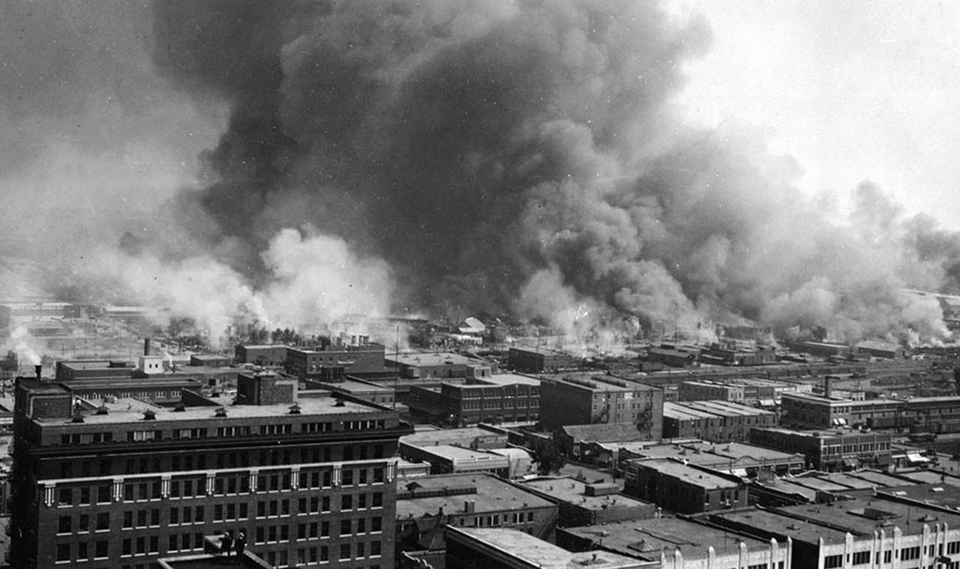
OKLAHOMA CITY (AP)—Scientists surveying a cemetery and a homeless camp in Tulsa, Okla., found pits holding possible remains of black residents killed nearly 100 years ago in a race massacre, investigators have revealed.
In a report presented Monday night to the 1921 Race Massacre Graves Investigation Public Oversight Committee, Oklahoma Archaeological Survey scientists Scott Hammerstedt and Amanda Regnier said forensic archaeologists scanning with ground-penetrating radar at the sites in north Tulsa found anomalies in the ground that they think should be excavated and tested further.
“There have been other searches that have found some anomalies, but I think that ours is the most promising one,” Hammerstedt told The Associated Press on Tuesday. “There was a commission in the late ’90s, but their results never went anywhere.”

The violence in 1921 left as many as 300 dead in Tulsa’s black neighborhood Greenwood two years after the summer of 1919 when hundreds of African Americans across the country were slain at the hands of white mob violence during the “Red Summer.” It was branded “Red Summer” because of the bloodshed and amounted to some of the nation’s worst white-on-black violence since slavery. In Tulsa’s Greenwood district, over 1,200 black-owned homes were burned, more than 200 looted, and the entire commercial area was destroyed.
The recent findings in Tulsa come at a time when more communities and institutions are trying to reconcile these past atrocities.
Hammerstedt and Regnier said in their report that the anomalies found by the archaeologists included indications of “a rather abrupt straight-walled boundary.” Their report added that “the straightness of the sides combine to suggest that this anomaly may be a common grave.”
Two locations in particular were noted in the report—one at the homeless area known as “The Canes” and the other in Oaklawn Cemetery.
“This very much looks to be like a human-dug pit of some sort,” Hammerstedt told the oversight committee. “The size of it is very indicative of what could be a common grave associated with the massacre.”
The other two locations were both at the cemetery, including an area where 18 black male massacre victims identified in newspaper reports and funeral home records were reportedly buried.
“You can’t be 100% certain that it’s bodies down there,” unless the sites are excavated, Hammerstedt said. “If it’s bodies, what was the cause of death? If they don’t have gunshot wounds, any trauma, then it could be deaths from other causes.”
He said they could possibly be victims of the Spanish flu outbreak in 1918-19 that, according to the Oklahoma Historical Society, killed an estimated 7,350 people in Oklahoma.

Tulsa Mayor G.T. Bynum said in October 2018 that the sites would be re-examined after inspections in the late 1990s and early 2000s failed to reveal suspected graves. Bynum said current technology “is light years” ahead of what was available then.
If human remains are found, that would be just the first step toward determining that they are victims of the massacre, according to the release announcing the search for mass graves. “We’re not sure that (cause of death) can be determined,” city spokeswoman Kim Marsh-MacLeod said Tuesday, saying it will be a determination made by medical or forensic examiners.
Hammerstedt and Regnier’s report said the scientists are confident in its findings, but more research is needed. “We wish to emphasize that geophysical survey alone cannot determine the precise nature of these anomalies,” their report said.










